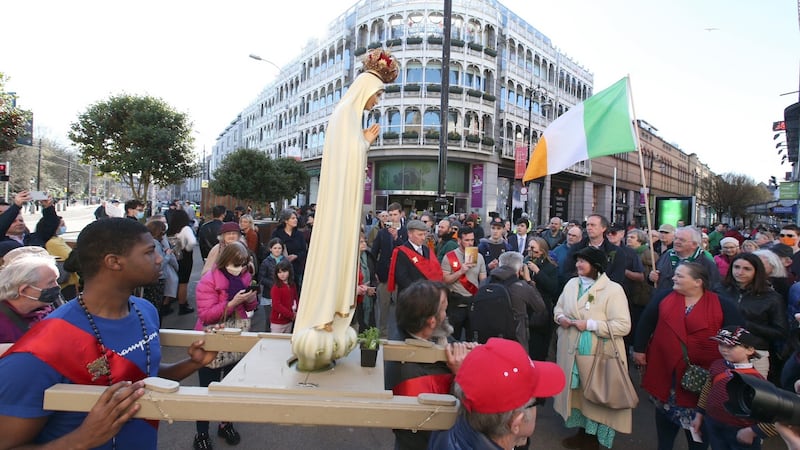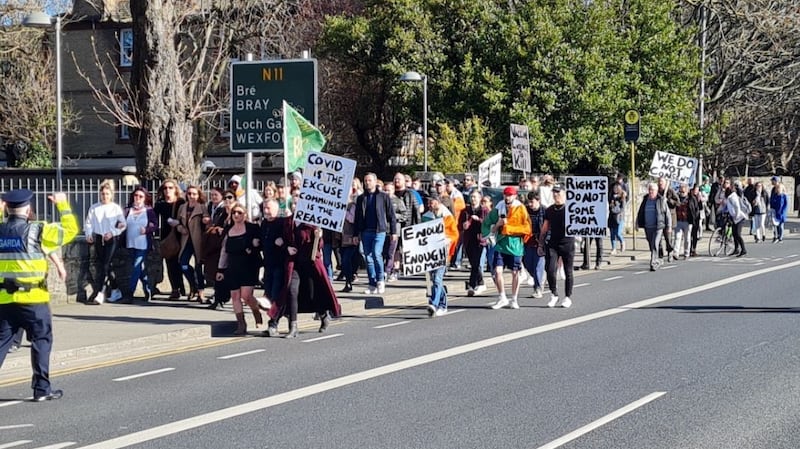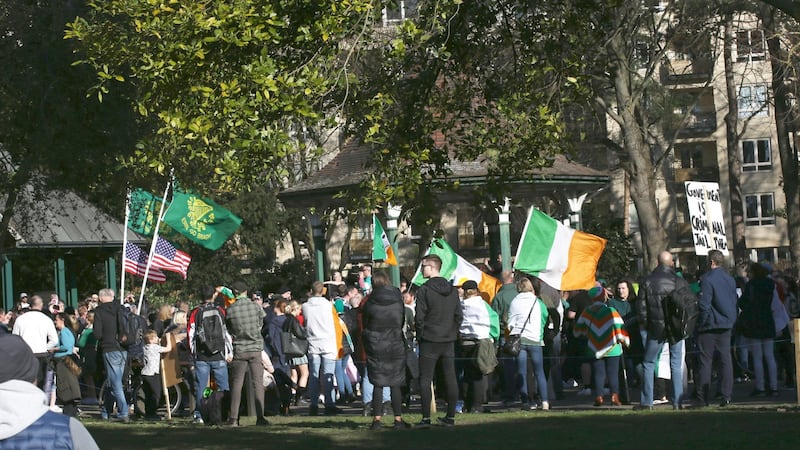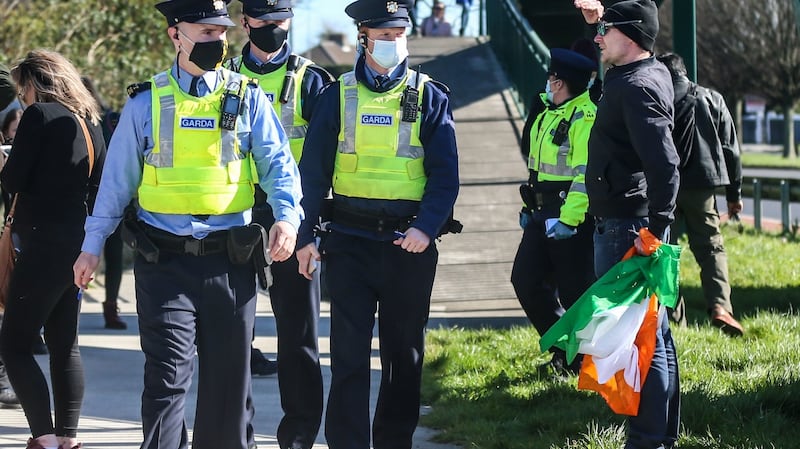Anti-lockdown protests in Dublin passed off peacefully on St Patrick’s Day as gardaí said numbers at the events were much smaller than expected and a major policing operation was put in place across the city to guard key locations.
However, more than dozen people were arrested at protests in the city.
The Garda said several events organised on social media had taken place but with limited numbers in attendance.
Up to 3pm, 16 people had been arrested – 13 male and three female – associated with these events, gardaí said.
Ten people had been charged and were due to appear before a sitting of Dublin District Court on Wednesday afternoon.
Speaking on Wednesday afternoon, Deputy Commissioner, Policing and Security, Anne Marie McMahon said: “This has not been a normal St Patricks Day. I acknowledge the huge level of compliance and social responsibility demonstrated today. I appeal to the public to continue this effort into this evening.”
The Garda said it would continue high-visibility patrolling at public amenities on Wednesday evening, conducting checkpoints focused on non-essential travel and people exercising outside 5km of their home, road safety activity and large gatherings that may occur countrywide.
In Dublin city centre, there was a large Garda presence at the Spire on O’Connell Street throughout the early afternoon although the number of protesters was considerably smaller.


Despite the low attendance there were arrests, largely of people who were approached by gardaí and refused to give their names and addresses and their reasons for being in the area.
Others who could offer no valid reason for being on O’Connell Street had their details taken and were told they would be issued with fixed-charge notices in the coming days.
A Garda sergeant directed proceedings and repeatedly told officers to first engage and then encourage the small groups and individuals to leave the area.
Two separate protests had been arranged for the city centre at the same time.
One, which sought to “reclaim St Patrick’s Day for the Holy Trinity”, was due to assemble at the Garden of Remembrance ahead of a march to the Dáil. There was also an anti lock-down protest set to take place outside the GPO, which was also said to be planning to march the Dáil.
Any danger that the two groups, with distinctly different aims, would get mixed up was avoided by the small attendance at both protests.
By 3.30pm the people who had come to the GPO had largely dispersed and the Garda presence was scaled back significantly.
Disturbances
Meanwhile, earlier in the day senior Garda officers were concerned a protest planned for RTÉ’s Donnybrook campus in south Dublin in the afternoon may have led to public disorder, especially in light of disturbances at a protest on Grafton Street just over two weeks ago. But when protester numbers reached no more than 150 no flashpoints occurred.


Gardaí erected crowd-control fencing at the two-vehicle entrances to the campus and took up position on the grounds from Wednesday morning, hours before the protest’s scheduled 2pm start. Large numbers of uniformed gardaí formed the frontline, with Garda public order units and mounted units also there in the event trouble flared.
Gardaí also closed Stillorgan Road southbound, with only local access allowed and identification required from anyone on foot. After that an hour-long rally concluded without incident at about 3pm. Most those present joined another anti-lockdown event in Herbert Park, Donnybrook, swelling numbers there to approximately 400 to 500.
The vast majority of people at both events were not wearing masks or socially distancing. The Herbert Park event was addressed by speakers before a band played a number of songs and the event ended at 4pm with the crowd dispersing.
Those to address the crowd with anti lock-down speeches included Prof Dolores Cahill of the Irish Freedom Party, barrister Tracey O’Mahony and Dr Anne McCloskey. A small number of protesters then broke away from the main crowd and began marching back to the RTÉ campus before stopping and deciding to march into the city centre while being followed by Garda vans carrying public order units, or riot squads.
When the group, numbering about 50 people, reached the south inner-city they were prevented from going into St Stephen’s Green, which was quickly cleared of people and closed, and also prevented from going down Grafton Street.
There was one arrest as uniformed officers approached the group on Stephen’s Green north and blocked them walking towards Grafton Street. Those still among the group at that time dispersed and some were stopped and spoken to in the streets off Stephen’s Green and Grafton Street.
There were some arrests at the Herbert Park protest and at another event planned for O’Connell Street were numbers were described as “miniscule” by gardaí who were present. Most of the arrests arose after people who were stopped and spoken to by gardaí refused to give their name and address during checks to establish if they had made non-essential journeys.
A number of those at the RTÉ protests later in the day complained they had been prevented from congregating at the Spire. They added that some of their friends had been stopped by gardaí on public transport and prevented from travelling into the city centre as they were making non-essential journeys.
On Wednesday might there was a high-visibility Garda presence around St Stephen’s Green and on O’Connell Street while streets around the Dáil and Government Buildings, including Merrion Square park, were blocked from early morning.











